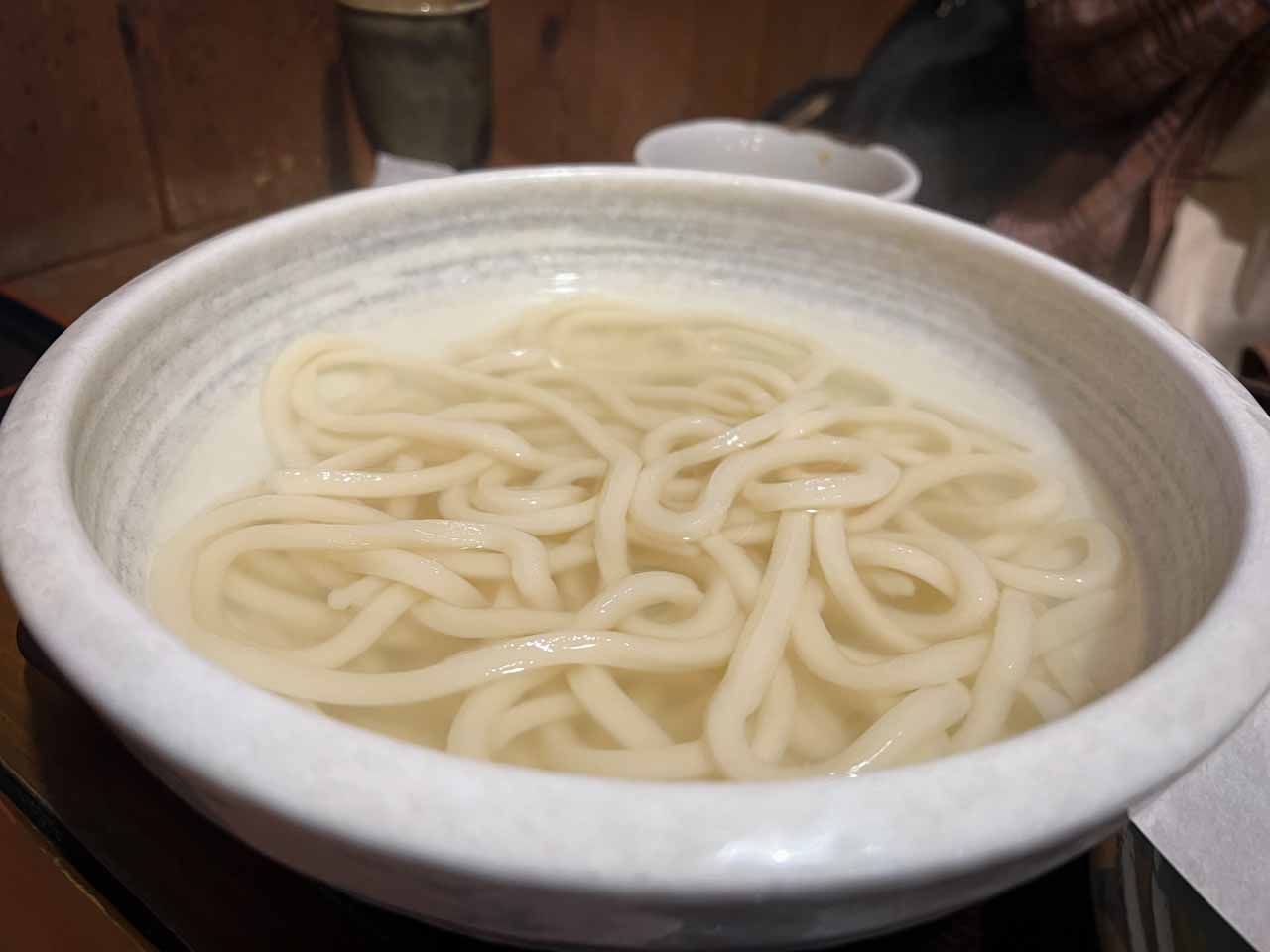The History and Origins of Kama-age Udon
Kama-age udon, which literally translates to “pot-boiled udon,” refers to a specific preparation method where the noodles are boiled in a large pot. This technique results in noodles with a smooth surface and a firm, chewy texture.
The origins of kama-age udon can be traced back to the Edo period in the Sanuki region (present-day Kagawa Prefecture) of Japan. At the time, wheat production was thriving in Sanuki, and udon consumption was high. By boiling large quantities of noodles in a pot, people could quickly prepare udon for the masses, making it a beloved dish in the region.
What Sets Kama-age Udon Apart?
So, what makes kama-age udon different from other types of udon?
First and foremost, the texture of the noodles is distinct. The boiling process in the pot causes the surface of the noodles to become smooth and the texture to be firm and chewy. This is due to the gelatinization of the starch on the surface of the noodles. The noodles are less likely to stick together and have a pleasant mouthfeel.
Additionally, kama-age udon is typically served immediately after boiling. The piping hot noodles have a delightfully soft and chewy texture. Kama-age udon is often enjoyed with simple condiments such as green onions or ginger, which complement the flavor of the noodles.
Why is Kama-age Udon Served in Hot Water?
One unique aspect of kama-age udon is that it is often served in a bowl of hot water without draining the cooking liquid. There are several reasons for this serving method.
Keeping the noodles in the hot water helps maintain their warmth and prevents them from cooling down too quickly. It also allows the noodles to retain their moisture, ensuring a tender and succulent texture.
Moreover, as the noodles sit in the hot water, the starch from the noodles gradually dissolves, creating a slightly thickened broth. This thickening enhances the overall flavor and mouthfeel of the dish.
Kama-age Udon vs. Water-Rinsed Udon
In contrast to kama-age udon, water-rinsed udon (also known as “hiyashi udon”) involves rinsing the boiled noodles in cold water. This process firms up the noodles’ surface and gives them a cool, refreshing texture.
Water-rinsed udon is often served chilled and is a popular choice during hot summer months. Rinsing the noodles in cold water also dilutes their flavor, making them an ideal base for dipping sauces or other flavorful accompaniments.
On the other hand, kama-age udon, served in hot water, allows the inherent flavor of the noodles to shine through. The noodles’ robust taste pairs well with simple toppings and light broths.
The Nutritional Profile of Kama-age Udon
Kama-age udon is not only delicious but also nutritious. The primary nutrients found in udon include carbohydrates, protein, and dietary fiber.
The main ingredient in udon, wheat flour, is rich in carbohydrates. Carbohydrates are essential for providing energy to the body, making them crucial for maintaining an active lifestyle.
Wheat flour also contains protein, which is necessary for building and repairing muscles, organs, and the immune system. The protein found in udon plays a vital role in maintaining overall health.
Furthermore, udon contains dietary fiber, which aids in digestion and helps prevent constipation.
In summary, kama-age udon is a traditional Japanese noodle dish that is prepared by boiling the noodles in a pot. This cooking method results in noodles with a unique texture and flavor profile. Served in hot water, kama-age udon offers a warm, comforting dining experience that differs from water-rinsed udon. Not only is kama-age udon delicious, but it also provides a range of essential nutrients, including carbohydrates, protein, and dietary fiber. Give this satisfying and wholesome dish a try to experience the authentic flavors of Japan.



